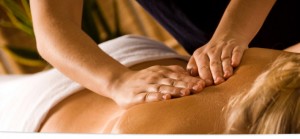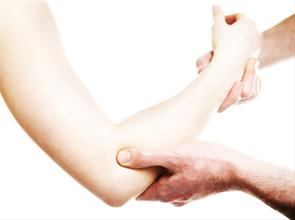 Body modesty is always an issue, given that our clients quite literally bare all when they are in our care. This can lead to a question for some therapists around the matter of whether a typical massage session should include work on the glutes (a.k.a. the muscles of your hiney).’
Body modesty is always an issue, given that our clients quite literally bare all when they are in our care. This can lead to a question for some therapists around the matter of whether a typical massage session should include work on the glutes (a.k.a. the muscles of your hiney).’
This group, which includes Gluteus Maximus, Gluteus Medius, and Gluteus Minimus, are actually some of the hardest-working muscles in the body. They connect all the work that the legs do, and they also connect to the lower back muscles. For those of us who are sitting a lot, or even people who are athletic and run, the whole hip area can often use a good working over, and the glutes certainly benefit tremendously from massage.
Unfortunately, with the proliferation of franchised chains and spas, therapists are often instructed to skip working directly on the glutes, so as to avoid even the possibility of an awkward situation, especially if there is a gender issue involved, such as a male therapist working on a female client, or vice versa. When such a major muscle group like the glutes is not even a consideration, it often means that the client won’t get the full therapeutic benefit of the session.
If you are ever concerned about your work on someone’s glutes being misinterpreted as anything inappropriate, rather than avoiding the area, simply converse with the client. Explain that these are very hard-working muscles that would benefit from this work, and ask the client if it would be ok to work on the gluteal area. Sometimes the client will say that they don’t need any work there, and sometimes they’ll greatly appreciate it. Either way, asking is better than just skipping. If you are still uneasy about working in that regions, ways to carefully respect someone’s modesty when working on their glutes could include:
- Starting out working through the sheet or blanket, with just a gentle tracing around the greater trochanter
- Using a shiatsu-style rocking technique through the sheet or blanket
- Still working through a sheet or a blanket and applying pressure or twisting action with your knuckles
When working directly on the skin, taking care to use careful draping, crossing the sheet over their glutes and tucking it securely under their leg and torso.
Most importantly, remember that what the client receives from the massage in the end is your intent. If your intent is purely therapeutic, even if the client is a little shy in the beginning, by the end of the massage, they will know that the only thing that you ever meant to do was to help them feel better.

 Let’s say you have a big, beefy athlete of a client on the table, with lots of delicious areas to work on. You dive in. You get the belly of the muscles. You get into the soleus, work their erectors. You proceed to work on their arms and get into the deltoids. Everything’s great, but you have to ask yourself: are you massaging the whole muscle?
Let’s say you have a big, beefy athlete of a client on the table, with lots of delicious areas to work on. You dive in. You get the belly of the muscles. You get into the soleus, work their erectors. You proceed to work on their arms and get into the deltoids. Everything’s great, but you have to ask yourself: are you massaging the whole muscle?
 I’ve noticed a ‘narrowing syndrome’ that sometimes develops among experienced massage therapists. When you first go to massage school, you learn all sorts of techniques which are new and exciting, and you try them all on your clients. Then, as you practice and become increasingly more confident, you find that a certain set of techniques emerge as your favorites. You develop a level of comfort and expertise with them, and you use them increasingly often. What can happen over time, though, is that by favoring those few techniques, many of the others that you learned go unpracticed and, eventually, get forgotten. This narrowing of your repertoire can lead to clients experiencing massage from you that consists entirely of only one or two techniques.
I’ve noticed a ‘narrowing syndrome’ that sometimes develops among experienced massage therapists. When you first go to massage school, you learn all sorts of techniques which are new and exciting, and you try them all on your clients. Then, as you practice and become increasingly more confident, you find that a certain set of techniques emerge as your favorites. You develop a level of comfort and expertise with them, and you use them increasingly often. What can happen over time, though, is that by favoring those few techniques, many of the others that you learned go unpracticed and, eventually, get forgotten. This narrowing of your repertoire can lead to clients experiencing massage from you that consists entirely of only one or two techniques. We’ve all heard from clients the occasional horror stories of their having been “brutalized” in a session with another massage therapist in which techniques were used that were so deep as to be painful and leave them bruised. Some of us may have even experienced that type of massage ourselves. How does that happen?
We’ve all heard from clients the occasional horror stories of their having been “brutalized” in a session with another massage therapist in which techniques were used that were so deep as to be painful and leave them bruised. Some of us may have even experienced that type of massage ourselves. How does that happen? Unique and specific techniques, like myofascial release, can greatly enhance the therapeutic benefit of your work on your clients, but when using them, it’s important to consider, and appropriately set, the client’s expectations for the session. Myofascial release is a wonderful way to create space for muscles to relax. Tension in muscles can sometimes be caused by the layer of membrane, called fascia, that surrounds the muscle group, which can be adhesed or dehydrated, preventing the muscles from moving freely.
Unique and specific techniques, like myofascial release, can greatly enhance the therapeutic benefit of your work on your clients, but when using them, it’s important to consider, and appropriately set, the client’s expectations for the session. Myofascial release is a wonderful way to create space for muscles to relax. Tension in muscles can sometimes be caused by the layer of membrane, called fascia, that surrounds the muscle group, which can be adhesed or dehydrated, preventing the muscles from moving freely. We all need to be listened to, but sometimes, that need can actually obscure communications. Take care not to be misled when a client gets carried away responding to your intake questions. Massage sessions typically begin with a question from the therapist to the client along the lines of “What would you like to work on today?” or “What brings you in today?” or one of my favorites, “Are there any parts of your body that hurt?”
We all need to be listened to, but sometimes, that need can actually obscure communications. Take care not to be misled when a client gets carried away responding to your intake questions. Massage sessions typically begin with a question from the therapist to the client along the lines of “What would you like to work on today?” or “What brings you in today?” or one of my favorites, “Are there any parts of your body that hurt?” Body modesty is always an issue, given that our clients quite literally bare all when they are in our care. This can lead to a question for some therapists around the matter of whether a typical massage session should include work on the glutes (a.k.a. the muscles of your hiney).’
Body modesty is always an issue, given that our clients quite literally bare all when they are in our care. This can lead to a question for some therapists around the matter of whether a typical massage session should include work on the glutes (a.k.a. the muscles of your hiney).’ Have you ever had a client who walks into the massage room with you and won’t even look up? They’re like a dark, stormy cloud. You can tell that something’s going on, but you don’t know what it is. Maybe they’re upset. Maybe they’re mad. Maybe they’re mad at someone else. Maybe they’re mad at you.
Have you ever had a client who walks into the massage room with you and won’t even look up? They’re like a dark, stormy cloud. You can tell that something’s going on, but you don’t know what it is. Maybe they’re upset. Maybe they’re mad. Maybe they’re mad at someone else. Maybe they’re mad at you. Massage is for more than just the muscles. The skin, the fascia, and the lymphatic system are all affected, as well. Even the “boney landmarks” of the body—the knees, elbows, and the little knobs around the ankles benefit from, and can contribute to, a satisfying and relaxing massage experience. During a recent massage session, the therapist was working along the muscles of my lower leg. As he moved skillfully upwards, he jumped right over my knee and proceeded to glide along my quads.
Massage is for more than just the muscles. The skin, the fascia, and the lymphatic system are all affected, as well. Even the “boney landmarks” of the body—the knees, elbows, and the little knobs around the ankles benefit from, and can contribute to, a satisfying and relaxing massage experience. During a recent massage session, the therapist was working along the muscles of my lower leg. As he moved skillfully upwards, he jumped right over my knee and proceeded to glide along my quads. Clients come to us in all kinds of states, and that can lead to not just potentially awkward situations, but sincere opportunities for you, as a massage therapist, to earn deeper trust from your clients by showing professional empathy and concern while maintaining a responsive, high level of care. Impatience on the part of the client is one such chance. You know what I mean: while you’re asking them questions about whether there are any areas of their body where they are experiencing pain or discomfort and would like some extra focus, they are literally tapping their fingers on their knee, sighing aloud, and saying with their body language, “Skip all this talk. Let’s just get on the massage table.”
Clients come to us in all kinds of states, and that can lead to not just potentially awkward situations, but sincere opportunities for you, as a massage therapist, to earn deeper trust from your clients by showing professional empathy and concern while maintaining a responsive, high level of care. Impatience on the part of the client is one such chance. You know what I mean: while you’re asking them questions about whether there are any areas of their body where they are experiencing pain or discomfort and would like some extra focus, they are literally tapping their fingers on their knee, sighing aloud, and saying with their body language, “Skip all this talk. Let’s just get on the massage table.” Now, we all know massage, itself, calms the nervous system through the power of our tactile sense, the sense of touch. Many massage therapists also use aromatherapy, applying or diffusing essential oils, because smell can be another way to help shift somebody into a healthier state. But what about sound? Music involves yet another sense, the auditory sense. It’s important to know that while, for some of us, it’s just pleasant background noise, there are others who are incredibly sensitive to music. It can have a big positive or, unfortunately, negative impact on their experience. Taking a quick moment to ask your client if they like the music can make a big difference, but when and how can you do that? One thing that has worked well for me, when practicing with clients, is to have different music options readily available. I find that if I turn on a track as I leave the room after we’re done with the intake, it allows the client to listen to the music while they are getting undressed and are on the table waiting for me to return. When I come back, I can very simply ask,
Now, we all know massage, itself, calms the nervous system through the power of our tactile sense, the sense of touch. Many massage therapists also use aromatherapy, applying or diffusing essential oils, because smell can be another way to help shift somebody into a healthier state. But what about sound? Music involves yet another sense, the auditory sense. It’s important to know that while, for some of us, it’s just pleasant background noise, there are others who are incredibly sensitive to music. It can have a big positive or, unfortunately, negative impact on their experience. Taking a quick moment to ask your client if they like the music can make a big difference, but when and how can you do that? One thing that has worked well for me, when practicing with clients, is to have different music options readily available. I find that if I turn on a track as I leave the room after we’re done with the intake, it allows the client to listen to the music while they are getting undressed and are on the table waiting for me to return. When I come back, I can very simply ask,